And we are back with the letter:

Jack London’s signature, highlighting the letter “L” in his last name. The signature is from his letter to Max Feckler, October 26, 1914 (MSS 6240. Clifton Waller Barrett Library of American Literature. Image by Caroline Newcomb)
L is for James Laughlin
While studying poetry with Ezra Pound in Italy, the poet told him, “You’re never going to be any good as a poet. Why don’t you take up something useful?” Laughlin returned to Harvard in 1936, and founded New Directions, a publishing enterprise he started in his dorm room with help from his family’s fortune. New Directions evolved into a highly prestigious avant-garde press, publishing works by Gertrude Stein, William Carlos Williams, James Joyce, Ezra Pound, Elizabeth Bishop, and many others. Laughlin did manage to publish a number of books of his own poetry, as well. An author search of our online catalog shows 35 hits related to Mr. Laughlin, and over 500 for New Directions publications. The press is still in operation today.
Contributed by George Riser, Collections and Instruction Assistant
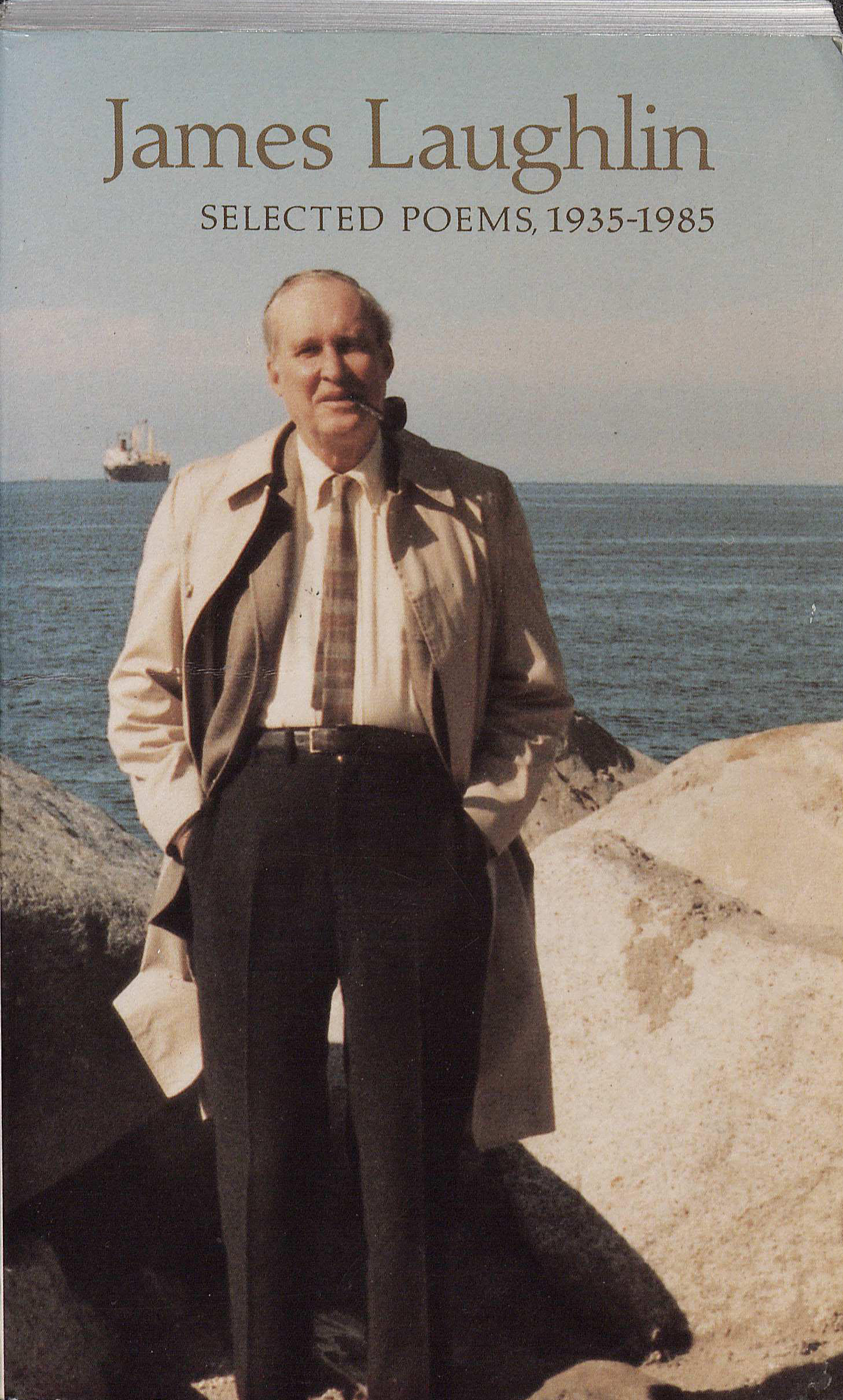
James Laughlin Selected Poems, 1935–1985.’ City Light Books, 1986. (PS3523. A8245A6 1986. Marvin Tatum Collection of Contemporary Literature. Image by Caroline Newcomb)
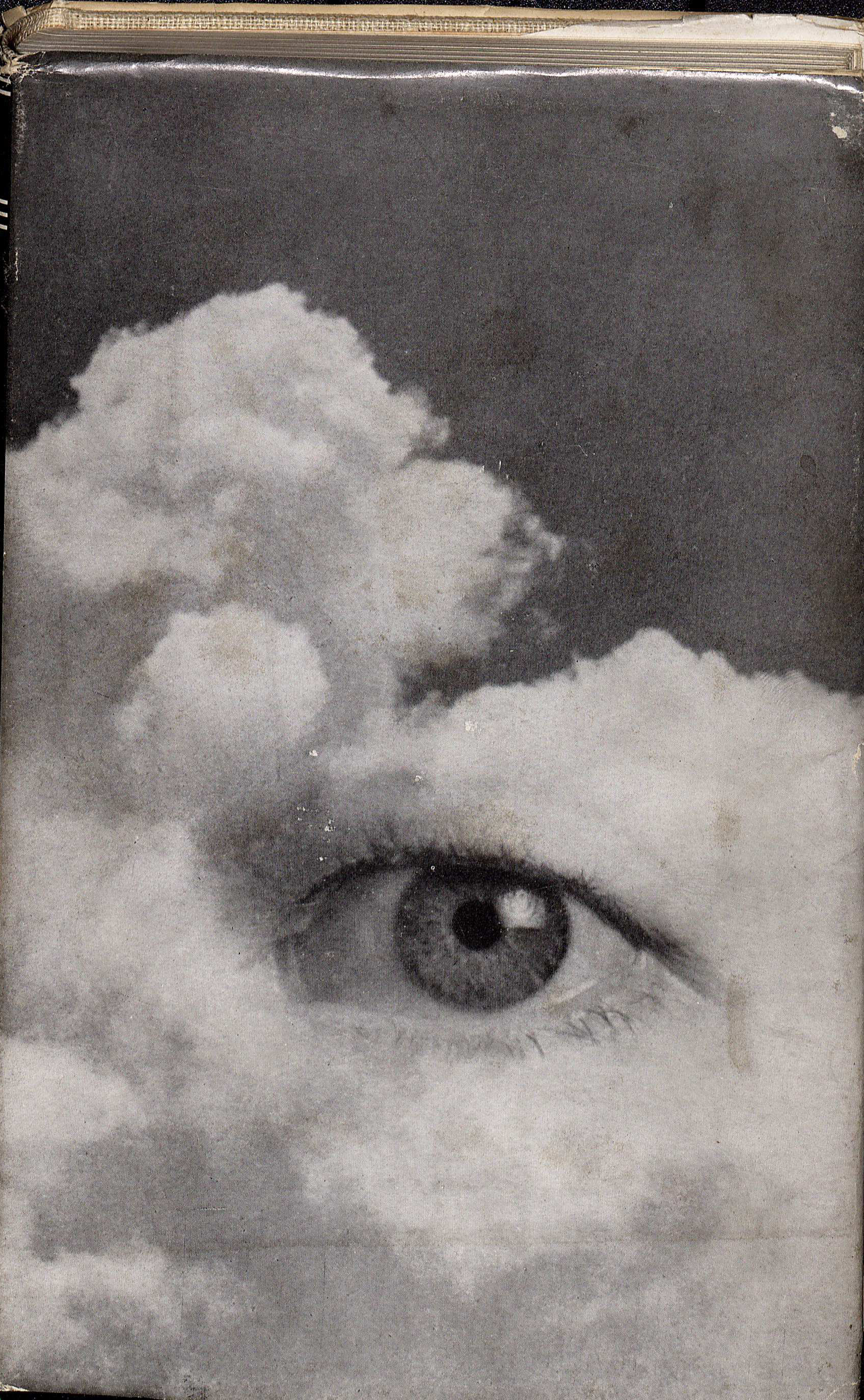
Henry Miller’s The Cosmological Eye. New Directions, 1939. The eye in the cloud is James Laughlin’s left eye. (PS3525 I5454 C6. Clifton Waller Barrett Library of American Literature. Image by Caroline Newcomb)
L is for Little Red Riding Hood
In 2007, Special Collections received as a gift from Martha Orr Davenport her marvelous collection of books and artifacts related to the tale of Little Red Riding Hood. There are approximately 480 books, 100 pieces of print ephemera, 50 works of art, ten magic lantern slides, and more than a hundred objects, including tableware, figurines, vases, pottery, tiles, crystal, glass, cloth, dolls, puppets, tinware, prints, and recordings.
Contributed by Molly Schwartzburg, Curator
![Clockwise from top left, these Reds Riding Hoods appear in the following books, which are not yet cataloged: "Little Red Riding Hood, (London: Tuck, [1890]); "Les Contes de Perrault" (Paris: Librairie de Theodore Lefevre, n.d.); "Walter Crane's Toy Books: Little Red Riding Hood" ([London]: George Routledge, n.d.); "Rotkappchen" (n.p: n.p., n.d.). [xx(6134166.1). Photograph collage by Molly Schwartzburg]](https://smallnotes.library.virginia.edu/files/2013/09/LRRH.jpg)
Clockwise from top left, these Reds Riding Hoods appear in the following books, which are not yet cataloged: “Little Red Riding Hood, (London: Tuck, [1890]); “Les Contes de Perrault” (Paris: Librairie de Theodore Lefevre, n.d.); “Walter Crane’s Toy Books: Little Red Riding Hood” ([London]: George Routledge, n.d.); “Rotkappchen” (n.p: n.p., n.d.). [xx(6134166.1). Photograph collage by Molly Schwartzburg]
![Clockwise from top left, these wolves appear in the following books, which are not yet cataloged: "Rotkappchen" (n.p: n.p., n.d.); "Tales of Passed Times Written for Children by Mr. Perrault and Newly Decorated by John Austen" (London: Selwyn and Bount, 1922); "Little Red Riding Hood, (London: Tuck, [1890]); "Walter Crane's Toy Books: Little Red Riding Hood" ([London]: George Routledge, n.d.).](https://smallnotes.library.virginia.edu/files/2013/09/Wolf.jpg)
Clockwise from top left, these wolves appear in the following books, which are not yet cataloged: “Rotkappchen” (n.p: n.p., n.d.); “Tales of Passed Times Written for Children by Mr. Perrault and Newly Decorated by John Austen” (London: Selwyn and Bount, 1922); “Little Red Riding Hood, (London: Tuck, [1890]); “Walter Crane’s Toy Books: Little Red Riding Hood” ([London]: George Routledge, n.d.). [xx(6134166.1). Photograph collage by Molly Schwartzburg]
In our collections are some notable items of the American author Jack London (1876-1916), who is best known for his book, The Call of the Wild and the short story, “To Build A Fire.” Among our materials are the typescript of his novel, The Sea Wolf, with his handwritten corrections, and two boxes of lively letters, illustrating the nature of his life as an adventurer and writer. This letter to a young man who has sent London a copy of his story is harsh but humorous, but in the end, offers good advice for a burgeoning writer. He ends with an invitation to visit him in California, “on the ranch.”
Contributed by Anne Causey, Public Services Assistant

Signed photograph of Jack London, ca.1907-1908. Photo taken on board the Snark, the sailboat upon which he cruised the South Pacific for 27 months with his wife Charmian. (MSS 6240. Clifton Waller Barrett Library of American Literature. Image by Caroline Newcomb)
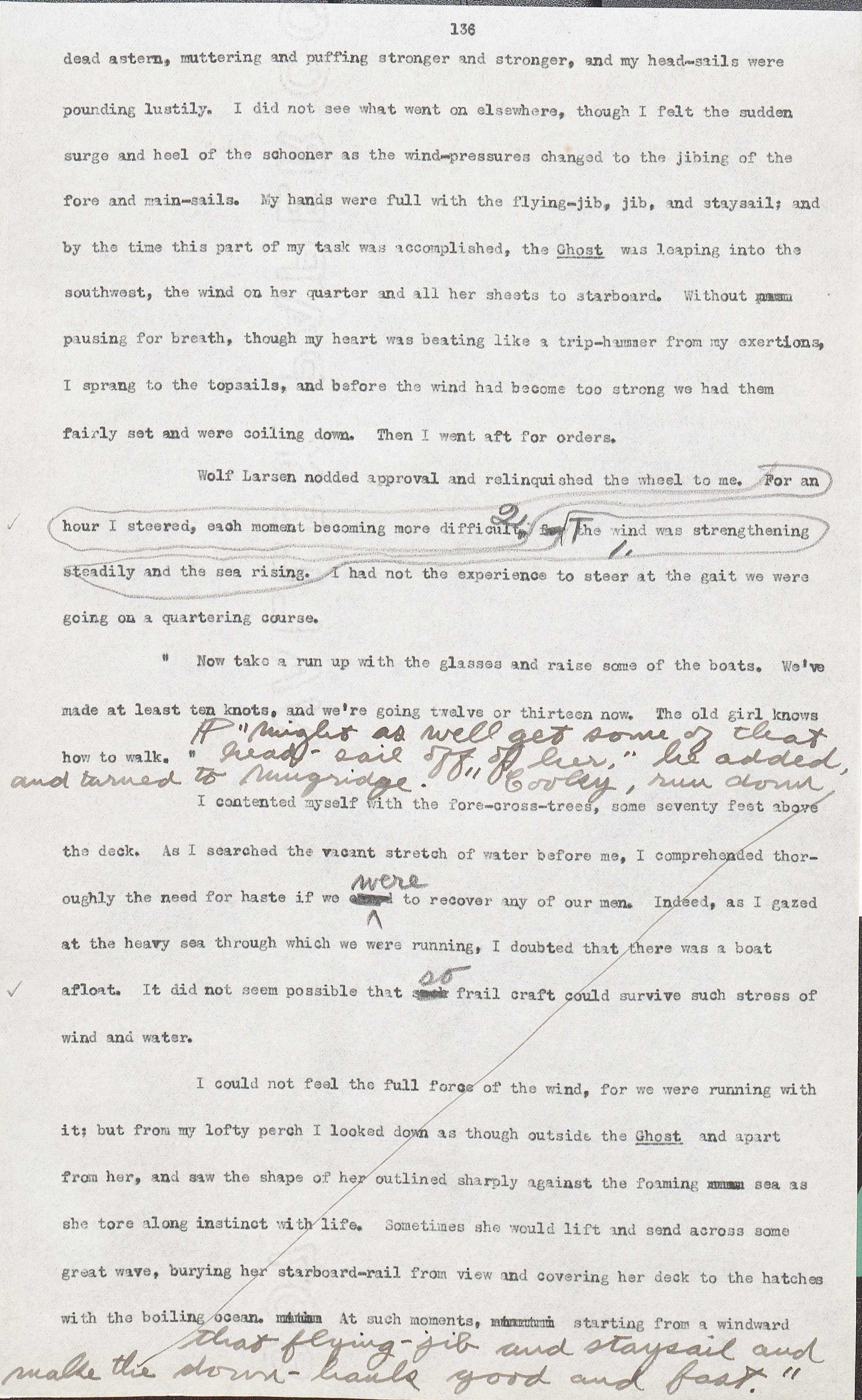
Typescript of Jack London’s The Sea Wolf with autograph corrections, page 136. (MSS 6240. Clifton Waller Barrett Library of American Literature. Image by Caroline Newcomb)
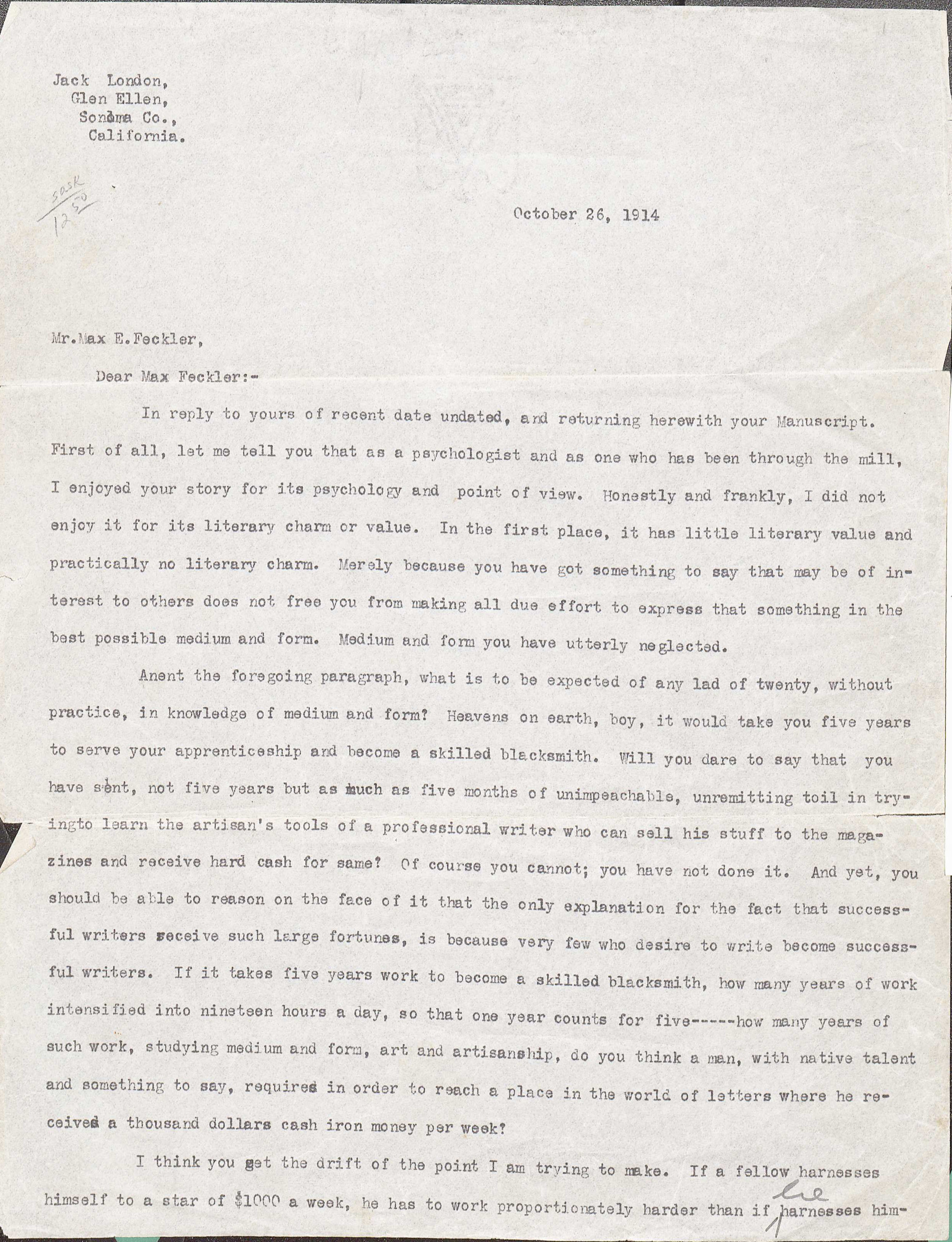
Letter to Max Feckler from Jack London, October 26, 1914. This letter shows the lively tone of many of London’s letters, although this one is much longer, more detailed and more impassioned. Here, he is advising a young writer to improve his skill and learn the market before he sends out a story. (MSS 6240. Clifton Waller Barrett Library of American Literature. Image by Caroline Newcomb)
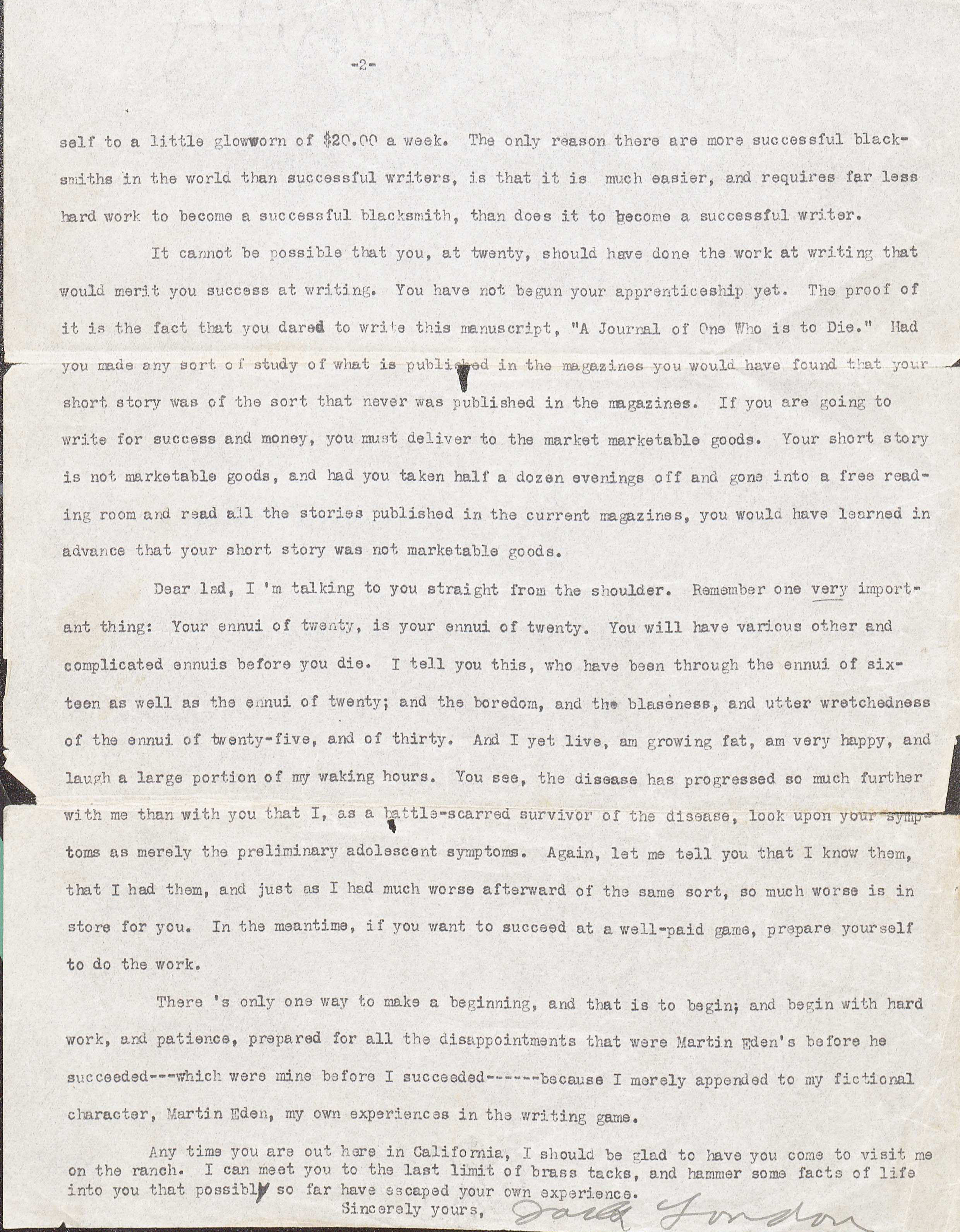
Page 2 of letter to Max Feckler from Jack London, October 26, 1914. (MSS 6240. Clifton Waller Barrett Library of American Literature. Image by Caroline Newcomb)
From “L” to “M,” see what our next letter selections will be in a couple of weeks when the ABCs of Special Collections continues.

